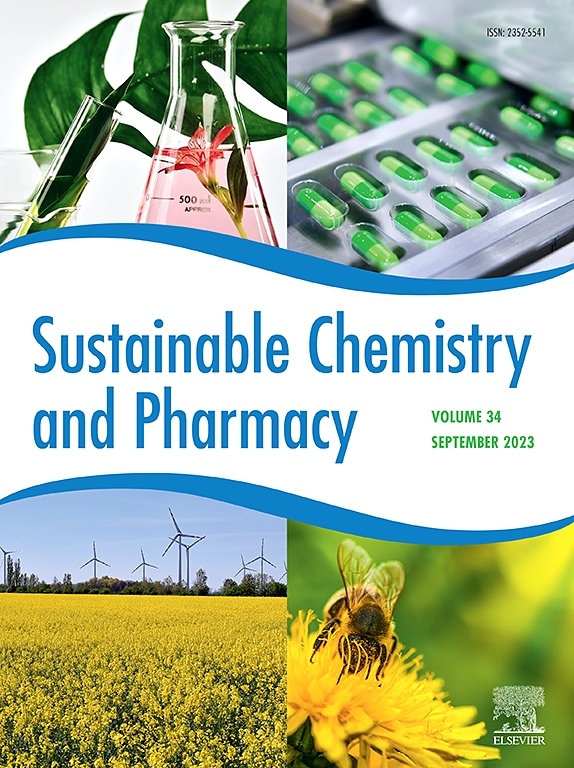Simulation and optimization of CO2 mineralization for sustainable cement production
IF 5.5
2区 化学
Q2 CHEMISTRY, MULTIDISCIPLINARY
引用次数: 0
Abstract
The cement industry is responsible for a significant portion of global CO2 emissions, primarily due to the calcination of limestone and the combustion of fossil fuels—both of which result in unavoidable process-related emissionsGiven the scale and persistence of these emissions, conventional mitigation strategies are insufficient, underscoring the urgent need for advanced technologies such as carbon capture, utilization, and storage (CCUS). Among CCUS pathways, CO2 mineralization offers a promising solution by converting carbon dioxide into stable mineral carbonates useable in construction materials. Furthermore, integrating alternative solid fuels and plastic waste in cement production, along with utilizing cement by-products as CO2 absorbents, has gained increasing interest. This study simulates a CO2 mineralization unit within a plug-flow reactor. The system is further extended to separate unreacted materials and products for potential reuse. Key operating parameters—pressure, temperature, molar ratios, and residence time—were systematically optimized. At 1 bar, 303 K, molar ratios of CO2, KOH, and N2 to CaCl2 of 2.06, 4.05, and 7.08, respectively, and a residence time of 45.0 s, a CO2 conversion of 98.3 % was achieved. The results demonstrate the potential of the proposed approach to significantly reduce the carbon footprint of cement manufacturing through effective CO2 utilization. Furthermore, three different cases were evaluated through a comprehensive techno-economic analysis: Case 1 involved CO2 sourced from SRF (Solid Recovered Fuel) with natural gas as the energy input; Case 2 considered CO2 captured from a cement plant using natural gas; and Case 3 combined CO2 from a cement plant with SRF as the energy source.

可持续水泥生产CO2矿化模拟与优化
水泥行业的二氧化碳排放量占全球二氧化碳排放量的很大一部分,主要是由于石灰石的煅烧和化石燃料的燃烧,两者都会导致不可避免的与工艺相关的排放。鉴于这些排放的规模和持久性,传统的缓解战略是不够的,因此迫切需要先进的技术,如碳捕获、利用和储存(CCUS)。在CCUS途径中,二氧化碳矿化提供了一个很有前途的解决方案,将二氧化碳转化为可用于建筑材料的稳定矿物碳酸盐。此外,在水泥生产中整合替代固体燃料和塑料废物,以及利用水泥副产品作为二氧化碳吸收剂,已引起越来越多的兴趣。本研究模拟了塞流反应器内的CO2矿化单元。该系统进一步扩展到分离未反应的材料和产品,以供潜在的再利用。系统优化了关键操作参数——压力、温度、摩尔比和停留时间。在1 bar, 303 K, CO2, KOH和N2与CaCl2的摩尔比分别为2.06,4.05和7.08,停留时间为45.0 s的条件下,CO2转化率为98.3%。结果表明,通过有效的二氧化碳利用,所提出的方法具有显著减少水泥制造碳足迹的潜力。此外,通过综合技术经济分析,对三种不同的情况进行了评估:情况1涉及以天然气为能源输入的SRF(固体回收燃料)来源的二氧化碳;案例2考虑了从使用天然气的水泥厂捕获的二氧化碳;案例3将水泥厂的二氧化碳与SRF作为能源相结合。
本文章由计算机程序翻译,如有差异,请以英文原文为准。
求助全文
约1分钟内获得全文
求助全文
来源期刊

Sustainable Chemistry and Pharmacy
Environmental Science-Pollution
CiteScore
8.20
自引率
6.70%
发文量
274
审稿时长
37 days
期刊介绍:
Sustainable Chemistry and Pharmacy publishes research that is related to chemistry, pharmacy and sustainability science in a forward oriented manner. It provides a unique forum for the publication of innovative research on the intersection and overlap of chemistry and pharmacy on the one hand and sustainability on the other hand. This includes contributions related to increasing sustainability of chemistry and pharmaceutical science and industries itself as well as their products in relation to the contribution of these to sustainability itself. As an interdisciplinary and transdisciplinary journal it addresses all sustainability related issues along the life cycle of chemical and pharmaceutical products form resource related topics until the end of life of products. This includes not only natural science based approaches and issues but also from humanities, social science and economics as far as they are dealing with sustainability related to chemistry and pharmacy. Sustainable Chemistry and Pharmacy aims at bridging between disciplines as well as developing and developed countries.
 求助内容:
求助内容: 应助结果提醒方式:
应助结果提醒方式:


